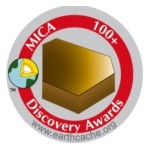In Ontario, the Niagara Escarpment is a continuous geological landform that extends to the middle of Michigan in the US. The Niagara Escarpment is part of the edge of a huge geological basin known as the Michigan Basin. The formation of the escarpment dates back some 450 million years (known as the Ordovician and Silurian Geological Time Periods) when this basin was filled by a huge warm sea. Corals and other sea creatures that lived in this sea eventually died and over time turned into sedimentary rock. Over millions of years, erosion from running water (e.g. streams and rivers) created many of the hundreds of geologic features found on the escarpment - Hilton Falls is one of these features.
The Hilton Falls waterfall was formed as meltwater from retreating glaciers flowed over the Niagara Escarpment just south of this location. Even today, 16 Mile Creek continues to modify the gorge, enlarging it over time albeit at a rate that is so slow that we will not notice it during our lifetime.
The focus of this Earthcache is to inform the visitor as to the the processes involved in the formation of the Hilton Falls waterfall.

Logging Requirements:
To log this Earthcache, perform the following tasks and determine the answers to the questions below. Email me your answers, DO NOT include them with your Found It log.
Go to the posted co-ordinates where you will find an information panel on a viewing platform near the bottom of the falls.
How long ago was Hilton Falls formed?
What is the name of the process by which the gorge is carved?
What is the name of the hard caprock?
What types of softer rock are found under the caprock?
- Look to the right of this missing information panel and you will see an overhang. Approximate the widest depth of area that has been eroded.

